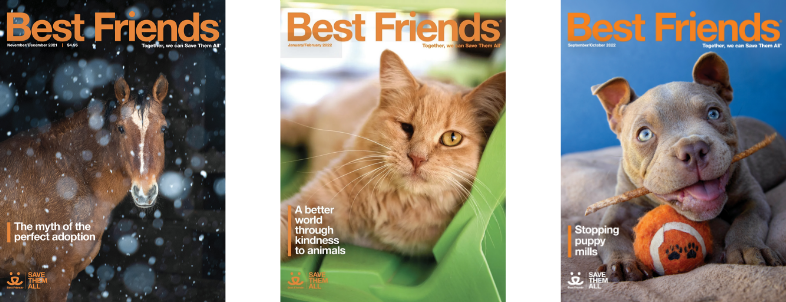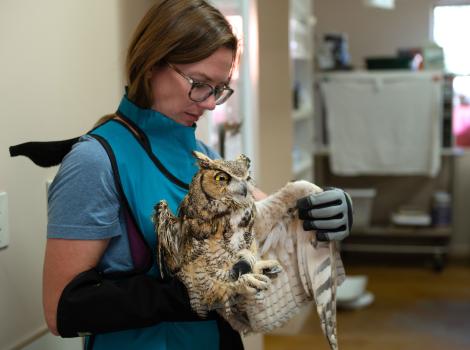Cavy curiosities: Meet our new wild friends

Hip and Hup came to Wild Friends, Best Friends’ state-and-federally-licensed wildlife rehabilitation and education center, after a zoo in Puerto Rico was destroyed by a hurricane. They've been stirring up curiosity ever since.
People often mistake these shy friends for capybaras. But nope, they’re a close cousin called cavies — and Hip and Hup are the first ones ever to live at Best Friends.
Native to Patagonia, these large rodents like to stick together. Having other cavies around is essential to their well-being. While we don't know the boys’ birthdays, they’re both adults and can live up to around 14 years in captivity. Of course, these two will need human caregivers for the rest of their lives since that's what they're used to.
After getting Hip and Hup settled into one of Wild Friends’ predator-proof enclosures, the team began working on their socialization, entertainment, and nutrition. At around 20 pounds, they arrived a little underweight. (They can weigh up to 30 pounds or so.) But now they enjoy toys like food puzzles designed for dogs that help them get the right amount of hay, pellets, fresh veggies, and greens, while also keeping them happily entertained.
[Meet the feathery new educators at Wild Friends]
Their favorite thing, though, is a giant sandbox where they can roll around and dig — an exciting change from the all-cement enclosure they’d spent most of their lives in.
With all the time the Wild Friends team is spending with them, Hip and Hup will likely shed their shyness. And that’s a good thing because they’ll soon have important jobs in Wild Friends’ educational program: They’ll help teach people about cavies, wildlife in general, and habitat loss, which affects so many types of animals. Bonus points will be given to anyone who can handle their cuteness for an entire “lesson.”

This article was originally published in the November/December 2023 issue of Best Friends magazine. Want more good news? Become a member and get stories like this six times a year.
Let's make every shelter and every community no-kill by 2025
Our goal at Best Friends is to support all animal shelters in the U.S. in reaching no-kill by 2025. No-kill means saving every dog and cat in a shelter who can be saved, accounting for community safety and good quality of life for pets.
Shelter staff can’t do it alone. Saving animals in shelters is everyone’s responsibility, and it takes support and participation from the community. No-kill is possible when we work together thoughtfully, honestly, and collaboratively.







